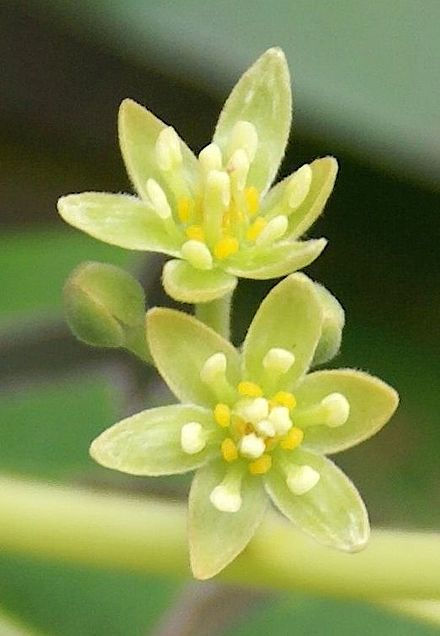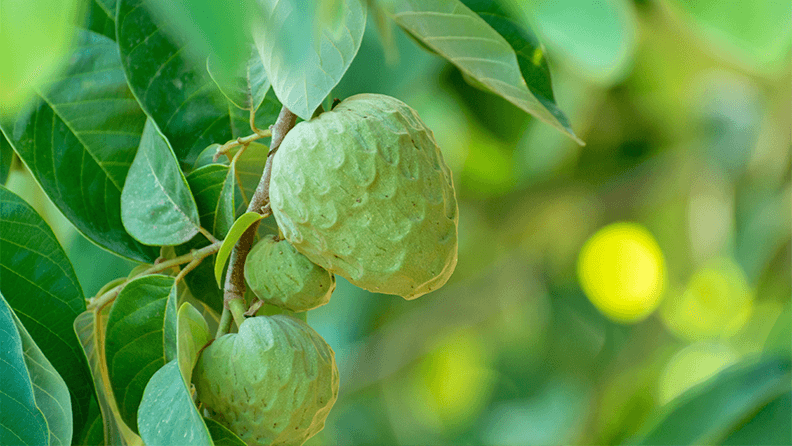Avocado tree
- Scarlet Allen
- Jul 2, 2023
- 4 min read
persea americana

Habitats: Humid lowland forests on limestone formations
Main bloom time: march-may
Bloom color: greenish-yellow
Harvest time: october-july
Growth: 10-25 meters
Edible parts: Fruit, Seed, leaves
Other uses: Medicinal, natural dye
Plants present at Son Selva: 2
Persea americana
The avocado is a large evergreen tree native to the Americas and was first domesticated by Mesoamerican tribes more than 5,000 years ago. Then as now it was prized for its large and unusually oily fruit. The tree likely originated in the highlands bridging south-central Mexico and Guatemala. And Mexico is the world's leading producer of avocados as of 2020, supplying nearly 30% of the global harvest in that year.
As a subtropical species, avocados need a climate without frost and with little wind. High winds reduce the humidity, dehydrate the flowers, and affect pollination. When even a mild frost occurs, premature fruit drop may occur; although the 'Hass' cultivar can tolerate temperatures down to −1 °C.
Like the banana, the avocado is a climacteric fruit, which matures on the tree, but ripens off the tree. Once picked, avocados ripen in one to two weeks (faster if stored with other fruits such as apples or bananas, because of the influence of ethylene gas).
Complicated love game
Avocados is only partially able to self-pollinate. The problem with pollination is that the timing of the male and female flower phases differs among cultivars. The two flowering types are A and B. A-cultivar flowers open as female on the morning of the first day and close in late morning or early afternoon. Then they open as male in the afternoon of the second day. B varieties open as female on the afternoon of the first day, close in late afternoon and reopen as male the following morning. So having just one avocado tree will make it almost impossible get the pollen from male flowers to female. Meaning you best have both cultivars to have male and female flowers open at the same time!
A cultivars: 'Hass', 'Gwen', 'Lamb Hass', 'Pinkerton', 'Reed'
B cultivars: 'Fuerte', 'Sharwil', 'Zutano', 'Bacon', 'Ettinger', 'Sir Prize', 'Walter Hole'

We have one 'Hass' (the kind you know from the store) and one 'Bacon' tree at Son Selva.
Interesting fact: Certain cultivars, such as the 'Hass', have a tendency to bear well only in alternate years. After a season with a low yield, due to factors such as cold (which the avocado does not tolerate well), the trees tend to produce abundantly the next season. In addition, due to environmental circumstances during some years, seedless avocados may appear on the trees. Known in the avocado industry as "cukes", they are usually discarded commercially due to their small size.
Avocado flower
The avocado water issue
A couple of years ago there was a big hate wave against avocados and many people were calling them unsustainable because of their high water demand. To me it always feels wrong to demonize a fruit without context. Of course importing tropical fruits from overseas is always a bad choice considering transportation. But let's talk about the water issue:
According to information published by the Water Footprint Network, it takes an average of approximately 70 liters of applied fresh ground or surface water, not including rainfall or natural moisture in the soil, to grow one avocado fruit. However, the amount of water needed depends on where it is grown and more importantly how. It's the hight demand that led farmers to grow more avocados and in regions where water is scarce. Also most avocados are grown in large monocultures which dries out the soil and more water is needed to grow the trees. This is unnatural and a big problem. But it's definitely the agriculutral system to blame, not this specific fruit. While everyone is blaming the poor avocado, nobody is talking about the water use of other crops. Just to give you one example: According to WWF, it takes more than 20,000 liters of water to produce just one kilogram of cotton, which roughly equals one T-shirt and a pair of jeans.
At Son Selva all fruits are grown using the syntropic method. The ground around our trees are covered with herbs and bushes to provide the humid climate our avocados like and need and allows various other plants to take advantage of its shade (and water). The rows of trees also act as a wind break.

Avocado grown in monoculture: Along the roads in Petorca, the avocado trees have been cut down because of lack of water. Source: danwatch
Medicinal uses:
The plant, in general, has a wide range of medicinal uses. Extracts of the leaves have shown antihypertensive and anticancer activities. The leaves are used against dysentery, coughs, high blood pressure, liver problems, and gout. The bark is used against diarrhea while the fruits are used to lower blood cholesterol level, promote hair growth, sooth skin and treat skin conditions, and as aphrodisiac. Grounded seeds are used in the treatment of various skin conditions.

Other uses:
The leaves can be made into tea or, when toasted, used as flavoring in stews and bean dishes. Seeds also yield oil, which is used in the cosmetic industry, and dye used for marking clothes. Being evergreen, it is also an excellent shade tree for us in the summer.
Textiles turn rose when dyed with the husks and pits of avocados.








Comments